Recycling is encouraged in the 21st century - and that seems to be the case on the railway, too. The freight industry has been buying locomotives from preservation and scrap merchants in recent months and years as more contracts are won requiring locomotives sooner rather than later.
It’s 20 years since Wisconsin Central arrived in the UK, buying three of the five pre-privatisation companies set up (Loadhaul, Mainline Freight and Transrail) as well as the parcel and charter operator Rail Express Systems.
Within six months, the newly-established English Welsh & Scottish Railway had also bought Railfreight Distribution(RfD) and placed an order for 250 Class 66s.
The future for the older traction fleets including Class 31s, ‘33s’, ‘37s’, ‘47s’ and ‘73s’ looked bleak, and that of the more modern ‘56s’, ‘58s’ and ‘60s’ was also up in the air. EWS followed up the order for the Class 66s with an order for 30 Class 67s. Even the electric fleet was not safe as Class 86s were withdrawn and ‘90s’ eventually stored.
Locomotives began to be made available, and while some were preserved in the early days, EWS set about a controversial policy of scrapping locomotives at Wigan Component Recovery and Distribution Centre (CRDC) at the former Spring’s Branch depot rather than make them available for sale.
This was challenged successfully, with the then rail regulator John Swift QC ruling that assets had to be disposed of.
This enabled companies such as Fragonset Railways and Direct Rail Services (DRS) to buy and restore locomotives deemed surplus by EWS but that would help these fledgling companies. Soon they would form the backbone of these fleets, and even in 2015 some companies such as Harry Needle Railroad Company (HNRC) and UK Rail Leasing (UKRL) rely on locomotives discarded in the late-1990s and early-2000s to build business and support major companies such as Colas Rail and GB Railfreight.
One of the most prolific traders is Harry Needle, who owns HNRC. His business model involves identifying markets and then searching for locomotives that will be suitable. Over the years this has enabled him to supply shunting locomotives to various companies and Class 20s for other industrial purposes.
Over the years he has also supplied Class 37s and 47s to DRS, but that market has dried up. Never one to miss an opportunity, Needle has been able to work closely with GB Railfreight (GBRf) and, latterly, Colas Rail. This has meant he has entered the loan market, hiring Class 47s from Riviera Trains (RT) and subsequently supplying them to GBRf.
These Class 47s were, largely, to be found at Crewe Diesel Maintenance Depot. Apart from one, the ‘47s’ were usually used for carriage heating at Crewe DMD and that was it. They had been removed from front line passenger duties by RT while other work had dried up. Occasional hire duties was all they were used for but they were still serviceable.
With GBRf requiring locomotives as it continued to win new contracts across the UK, the freight operator identified opportunities where older fleets could release more modern Class 66/7s for use elsewhere. This method had previously worked for short periods with a preserved Class 55, but the hire of ‘47s’ was on a more long-term basis.
They are based in Yorkshire and, following a major exam at HNRC’s Barrow Hill depot, they entered traffic with HNRC staff supporting them. The ‘47s’ haul sand trains from Doncaster to Goole, as well as gypsum trains in the area. This releases ‘66s’ for duties elsewhere. The versatility of the veteran Type 4s was shown in the summer when two were sent to Scotland to haul empty coaching stock moves for Caledonian Sleeper (CS). However, as reliability affected the CS fleet, so the ‘47s’ were used on portions between Edinburgh and Carstairs.
Of those that were returned to traffic on a regular basis, the oldest is 47815 Great Western. The Type 4 was delivered new as D1748 on July 1 1964 and is the oldest surviving main line-certified Class 47, delivered less than 24 months after the pioneer in September 1962. Indeed, of the five RT ‘47s’ used by GBRf the youngest is 47812, which was delivered on November 18 1965, meaning even that is half a century old.
But the ‘47s’ are not the only resurrected fleets GBRf has brought back to use. Class 73s are seen as the future for the company. This is a long-way from the turn of the millennium when the class seemed doomed, and GB Railways was handed a number of locomotives it seemingly didn’t want and which it stored at Norwich Crown Point.
Now GBRf cannot get enough of them. It has scoured the private market buying examples from preservation (73005/006, 73128) or from other main line operators (73107/109, 73201). 73119 Borough of Eastleigh was bought from Knights Rail Services, while 73103/105/117/134 were all bought from Nemesis Rail.
The reason for the need for ‘73s’ was the infrastructure market for a period but in the past two years locomotives have been rebuilt for both Network Rail and CS. The 55-year old Southern Region design will soon be seen as far north as Aberdeen.
Millions of pounds have been spent refurbishing the ‘73s’. While keeping the same underframe, Wabtec Rail’s Brush Traction at Loughborough has replaced the original 600hp English Electric engine with a new 1,600hp MTU R43 4,000 V8 engine. This provides increased power, improved fuel economy and enhanced versatility. Five GBRf examples (73961-73965) are used on contract hire to Network Rail in a deal lasting for ten years, while a further six (73966-73971) will be used by CS in a 15-year deal. As RAIL went to press three CS examples had been released into traffic. The first two CS locomotives (73966 and 73967) were converted from 73005 and 73006 respectively. These had been preserved, with the former at the Dean Forest Railway and the latter at Crewe Heritage Centre. They had been withdrawn by Merseytravel in 2001.
Those working for NR will be rotated around two types of work, GBRf says. This will be infrastructure monitoring - hauling trains that monitor the track and record any defects - and possession management where they will haul engineering trains during the day and night.
GBRf says: “This increased power and versatility means that Network Rail will be able to cover a much wider area on their monitoring and possession work, extending beyond the Southern Region.”
GBRf Managing Director John Smith says: “GB Railfreight is delighted that the first of its new Class 73/9s have entered into service and that they will be supporting Network Rail with its infrastructure work across the UK rail network. These electro-diesel Class 73/9s are incredibly versatile and powerful and can be used on a wide variety of routes across the regions. This deal is another sign of the significant investment GBRf is making in the domestic freight industry.”
Paul Gilbert, operations director for Network Rail National Supply Chain, perhaps best explains the reason for the investment in the ‘73s’ rather than brand new locomotives: “Our infrastructure monitoring and engineering trains are absolutely vital to the work we do each and every day. The introduction of the ‘73/9s’ is a quick and cost-effective way of boosting our fleet and will improve reliability and increase in our overall capability.”
Elsewhere within GBRf’s fleet, four Class 92s have also been resurrected, having been out of traffic since 2006. The locomotives, 92014/018/023/033, are also for the CS fleet, and were overhauled by Wabtec at Brush. Reliability problems have plagued the fleet, resulting in their temporary withdrawal from main line operations while plans are drawn up regarding improving their performance. It is worth remembering that these locomotives have had little use since their introduction in the mid-1990s and this is the first time that they have been tasked with hauling heavy passenger trains (although one of their anticipated duties at construction was to haul the ill-fated ‘Nightstar’ international ‘Sleeper’ service on electrified routes). One insider described what the ‘92s’ have suffered as ‘teething troubles’ associated with brand new trains.
The ‘92s’ were bought a few years ago having been in store. The GBRf fleet was originally owned by French National Railways (SNCF) and Eurostar Passenger Services (EPS) when first delivered and saw nowhere near the level of use those owned by RfD (later EWS/DB). Many were, and still are, stored. GBRf bought them in 2014 (RAIL 741) outright from Eurotunnel, which in turn had bought them as it looked to grow its business. Eurotunnel owns GBRf.
There are still six Class 92s that could be resurrected by GBRf, although the company has often stated that not all 16 locomotives in its fleet would be returned to traffic.
A further three electric locomotives are hired by GBRf from Electric Traction Ltd (ETL) for empty coaching stock moves associated with the CS operations, but two of these locomotives have been pressed into main line operation too. ETL supplies 86101 Sir William A Stanier FRS, 86401 Mons Meg and 87002 Royal Sovereign.
The ‘86/1’ and ‘87’ were already certified for main line work, but had seen little use in recent years before the CS deal and there were concerns regarding their future. The ‘86/4’ had a far bleaker future before the CS deal came to fruition but it returned to the main line more than a decade after EWS withdrew it and it subsequently became the first Class 86 to be preserved. Unlike the ‘86/1’ and ‘87’ it has yet to haul a CS train between England and Scotland, but it has hauled a passenger train from Euston to Wembley when the ‘Sleepers’ were diverted via the East Coast Main Line due to flooding at Carlisle.
Finally, 59003 Yeoman Highlander entered traffic with GBRf in October 2015, hauling trains between Port of Liverpool and Tuebrook Sidings. It was bought in 2014 having been out of use in Germany, where it had been exported in 1997 after Foster Yeoman (which owned it at the time) felt it was surplus to requirements in the UK. Its haulage capabilities were attractive to GBRf and in October 2014 it arrived back in the UK and was returned to traffic by Arlington Fleet Services. The ‘59/0’ is the only member of its class in GBRf’s fleet, something that is likely to remain the case.
Back to HNRC. The company, as well as supplying locomotives to GBRf also supplies Colas Rail with Class 37s.
The freight operator was awarded the Infrastructure Monitoring (IM) contract by Network Rail in 2015, replacing DB Schenker (DB). This meant a change in traction. Previously IM trains were hauled by NR Class 31s and Class 37s hired from DRS. Additionally Class 67s hired from DB were also used, as were Class 73s. The latter deal remains in place, but Colas has started using its own Class 37s for these duties; and all were bought from preservation.
Colas currently owns nine Class 37s (37057, 37116/146/175/188, 37207/219/254, 37421) of which five are operational (37057, 37116/175, 37219, 37421).
Before it won the IM deal, Colas had bought four from preservation (37116/175, 37219, 37421) and two had been returned to traffic (37175, 37219) last year. Initially used on railhead treatment trains they were sent to HNRC for repairs before entering traffic on the NR trains.
HNRC reached an agreement to hire its own Class 37s to the operator. There was an urgent need for Class 37/0s capable of 90mph for these trains, and so a deal was agreed that preserved D6757 (37057), which had only just been returned to operational condition and which had been withdrawn by EWS in December 2004 would be hired to Colas. A need for up to ten Class 37s had HNRC charged with finding suitable locomotives.
It identified a number of suitable candidates, and, following negotiations, it bought 37146 from a private individual who also owns preserved 37674 and 47785, 37188 from John Ball at Peak Rail and 37207 from the Plym Valley Railway.
None had worked in preservation. HNRC told RAIL in July that the reason for buying locomotives that had never worked in preservation made sense because of the economics.
Operational locomotives were more expensive, which meant that the budget provided by Colas Rail would not go as far. Included in the six-figure sum for each locomotive was the purchase price, overhaul cost and equipment purchase. Each locomotive required fitting with relevant safety systems and HNRC also had to make a profit to make the project worthwhile.
HNRC reports that some deals were scuppered because of the high prices quoted by some preservationists. Some of those bought were partially restored (37207) or work had stopped following the beginning of restoration (37146/188). When they return to traffic this year, 37188 and 37207 will not have hauled trains in 20 years, having both been withdrawn by EWS in 1996, while 37146 was withdrawn in October 2000 having returned from hire in France.
A deal was subsequently agreed for Colas Rail to buy the locomotives from HNRC. The freight company then took its chequebook out and after HNRC identified locomotives, it bought them directly from preservation.
The stranger in the fleet is 37254, which was bought from preservation by Colas Rail. It was operational at the Spa Valley Railway and requires less work than the others. Not surprisingly it has jumped the overhaul queue at Barrow Hill. It is expected to be the sixth ‘37’ entering the main line fleet and will be released in January.
The company is believed to be in the market for more Class 37s. Rumours persist that another ‘37/0’ and a ‘37/4’ could be bound for the main line, with the former replacing 37421 in the IM fleet and the two ‘37/4s’ being used by Colas Rail on a new contract.
Additionally, Colas Rail is working on using its three Class 47s on IM trains capable of running at 100mph. This, so far, has not required HNRC to supply some of its own Class 47s, with Colas confident its own 47727/739/749 can be used. However, HNRC has spoken in recent months of the possibility of its ‘47s’ being made available for Colas for various work.
Colas Rail has not just been buying ‘37s’ and returning them to traffic - Class 60s have also been reactivated.
The company bought ten of the Type 5s from DB and the last of these returned to action this year. The majority had been stored for several years as DB downsized its need for the Class 60 fleet.
Colas identified a number of opportunities to win new flows across the UK that would make use of the strength of the Class 60s, and so all ten were put through the ‘Super Sixty’ overhaul programme at Toton.
DB was contracted for this work, which entails the locomotives being stripped and rebuilt using overhauled components. This was the first time the class has been put through such work, and the Colas ten follow 20 completed by DB.
HNRC was also responsible for returning 47830 to traffic for Freightliner (FL). The Type 4 was resurrected to haul wagons for repair between Leeds and York, releasing Class 66s for this duty. It was repainted into two-tone BR green, and has been hired to West Coast Railways for charter work. Rail Operations Group (ROG) has also used the locomotive on several occasions.
The work the ‘47’ was reactivated for has stopped operating. It is based at Leeds Midland Road and was named Beeching’s Legacy at a ceremony marking the 50th anniversary of Freightliner at the National Railway Museum in November 2015.
FL owns two other Class 47/8s (47811/816) and these are now unlikely to be re-activated. RAIL understands there is interest from other parties in buying.
HNRC itself has been active in the locomotive purchasing market. It has added 20087, 20110, 31235/255/285, 31465 to its main line fleet, while 08500/578, 08653, 08700/701/711/714, 08824/865/877, 08944/994, 09006 and 09201 have been added to its shunting fleet. Of these, only 08711 will be broken up for spares with the rest having a future with Needle suggesting that there is a growing need for Class 08s and 09s. All but two were bought via DB tender lists, with 08700 and 08944 bought from preservation. Already 08700 is on contract hire to Bombardier at Ilford.
The Class 31s were bought in 2015 from preservation (31235/255) and Network Rail (31285, 31465). So far none have returned to use, but HNRC has plans to certify all four for main line for contract hire. The need for locomotives is high among companies contracted by Network Rail to operate National Supply Chain (NSC) contracts.
The two bought from preservation have yet to leave their current bases. At the Mid-Norfolk Railway 31235 remains stored having suffered a major engine failure in October 2014 before HNRC bought it. The locomotive is sat on good quality bogies, which attracted HNRC. It was withdrawn by Transrail in September 1995 and had been a regular performer at the heritage railway.
At the Colne Valley Railway (CVR) 31255 is operational. It was withdrawn by EWS in January 1999. Both these Class 31s are destined for Barrow Hill and reactivation, but have been overtaken in the queue by 31285 and 31465. Both were sold by NR this year, with the former at Exeter Riverside having failed with a wheelset problem, and the latter deemed ‘life-expired’. The Class 31/1 is destined for Barrow Hill, while the latter has moved by road to Long Marston where it will be used for shunting purposes before it is hired to main line operators.
HNRC continues to be in the market for more locomotives and was looking to conclude a deal for two more preserved but unserviceable Class 31s. This, Needle says, is because certain locomotives that could be made available to the market are not, and so he must look at alternative options to supply various contracts.
The number of locomotives returning to traffic with DRS has dramatically reduced. The company had been active in the market in recent years, and acquired 37407/413/424, 37503/521, 37670, 37703/714/716/718 while agreeing a deal to hire 37403 from preservation.
However, a change in traction policy combined with changing fleet requirements means a number of these are now deemed surplus. It is understood that some could be made available for sale but the company, when asked, said its traction policy was “confidential”. Nevertheless 37718 has already been sold for scrap, and was cut-up by Booths during the summer having donated components at Derby.
Two Class 37/4s, 37407 and 37424, will return to traffic in February following comprehensive rebuilds at Railway Vehicle Engineering Ltd’s (RVEL’s) Derby workshops. They will join a fleet of Class 37/4s already in use with DRS and hired to passenger operators. The versatility of the electric train heat fitted locomotives makes them attractive for DRS which aims to supply not only the freight market but also the passenger sector.
DRS has also expanded its Class 57/3 fleet by adding a further six machines to its fleet of six, meaning it has all 12 of the original Class 57/3 fleet ordered by Virgin Trains that entered traffic from 2002. These have been introduced into the fleet and have replaced Class 47s.
Smaller operators have also been active in the market.
Nemesis Rail added 47701 to its fleet in 2014. The Class 47/7 has been made operational and is on hire to British American Railway Services (BARS) at Dartmoor Railway. The Type 4 was based at the Devon railway when it was privately owned. It was once used on the main line, but was withdrawn from that in 2003 as it required TPWS. Along with 33103 Swordfish and 45112 it is one of only three operational Nemesis Rail locomotives, and none is currently passed for the main line.
The company does, however, have a number of locomotives allocated to its main line pool but none are capable of operating. In the pool are 31289, 31461, 33019, 33103, 37255, 45112, 47488, 47640, 47744 and 73114. These are at various heritage railways or Nemesis Rail’s Burton facility (31461, 45112, 47488, 47744). One locomotive that was passed for the main line, 47375, has been exported to Hungary, but by mid-December had only reached Amsterdam.
West Coast Railways has bought one Class 37 (37518) from Ian Riley and two Class 47s from Direct Rail Services (47802/832) that were stored for a few months before being disposed of. All three are part of the active WCR fleet.
While it is hiring Class 73/9s from GBRf, Network Rail has two of the rebuilt Class 73s of its own on its books, although neither has been passed for main line work yet. The locomotives are 73951 and 73952. Both are undergoing testing and once this is complete they will be acquired by NR. They have been rebuilt by RVEL at Derby from 73104 and 73211. Both had been out of traffic for many years.
Elsewhere, two Class 37/7s once used in Spain are set for a lengthy return to the main line. Europhoenix (EP) acquired 37800 and 37884 from EMR after they were returned from Spain. The ‘37s’ had been bought by the scrap merchant from DB, and were then re-sold to EP. The company has had them returned to main line standards and they have subsequently been hired to ROG for rail services. They have had their ballast removed, which reduces their weight and increases their route availability meaning that they become more operationally attractive as they can operate on other routes.
So far 37884 has returned to traffic following overhaul by HNRC at Barrow Hill. It will be joined by 37800, which is at UK Rail Leasing’s Leicester depot.
They were exported to France in 2001 by EWS. Along with DRS 37716 it means that three of the Class 37s sent to Spain have returned to main line use in this country, even if they are more than 50 years old. A further two (37703/714) are on DRS’ books but not active on the main line.
Also at UKRL, a number of Class 56s are being returned to the main line (see Fleet News, pages 12-13). Many have been out of use since their return to the UK from France where they were on contract hire to Fertis from EWS.
One recent returnee was 56098, which did not go to France, but instead was preserved before returning to the main line. It joined 56081 and 56104 which had been abroad. The latter was bought from EMR having been sold by DB.
Two Class 33s previously bought for preservation are also destined for main line careers with UKRL. One (33008) has never worked in preservation and has been owned by DRS and HNRC since being sold by EWS, while 33053 has worked in preservation but is currently unserviceable. They were withdrawn in February 1996 and January 1995 respectively.
Withdrawn by British Rail in March 1994 after a 27-year career on the main line, Class 50s have returned with a vengeance. Two - 50007 Hercules and 50017 Royal Oak - have been bought by Boden Rail Engineering Ltd (BREL), from preservation and returned to the main line, with 50050 Fearless set to join them.
While 50007/050 were two of the final three to be withdrawn, Royal Oak was withdrawn in September 1991. It had been on the main line before, around the turn of the century when hired to Venice-Simplon Orient Express but was then resold and ended up at the Plym Valley Railway. The two main line locomotives based there at one point (37207 and 50017) have both been bought by main line companies. BREL has hired its ‘50s’ at various points to Colas for freight work, including steel trains to Boston.
A Class 20 withdrawn in 1989 and preserved the following decade is now back on the main line. Class 20 Locomotive Society 20205 has been hired to GBRf for shunting in East London, but has also been used by DCRail. The Type 1 usually operates with the CTLS’ 20227 and both are deemed preserved.
Finally, not all locomotives bought by main line operators are destined for a return to the main line. At the Severn Valley Railway 20177 has been bought for component recovery, as has 33046 at the East Lancashire Railway.
What does the future hold? Could more preserved locomotives return to the main line? Given the apparently insatiable demand for these versatile veterans and the lack of readily available modern alternatives, it would be foolish to bet against it.
- This feature was published in RAIL 791 on January 6 2016

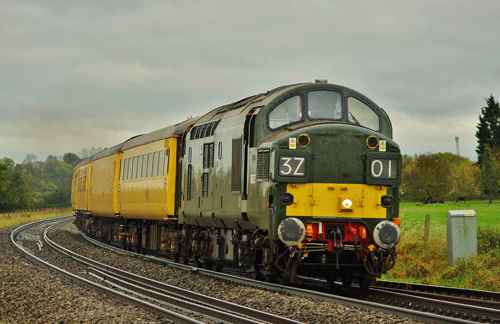
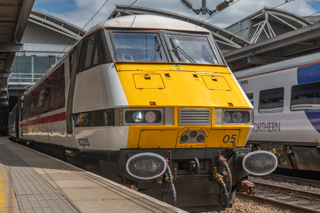
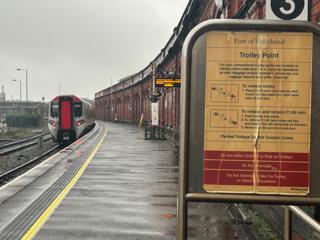
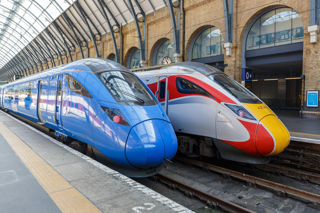







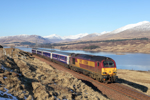



FrankH - 25/02/2016 03:51
I'm surprised no freight operator took an option to to buy any of the refurbished class 86 and 87's that went to Europe. The Wembley Euro Freight centre - Daventry - Coatbridge/Mossend route would've been ideal for them. It's a pity the 92's rotting at Crewe arn't in anyones minds, 1 of those = a 1600 ton train over shap and beatock vs 2 66's or 2 86's/90's. DB reckons they're a lot more expensive to run vs a 90 which may be why they've stopped using them, or is it because they now have spare 90's having lost the CS sleeper contract.